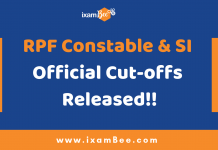Read all about Currency Devaluation and Revaluation, Who Decides the Value of the Currency, What is fixed exchange rate system and more in this article.
What is the Devaluation (Depreciation) of a Currency?
In a fixed exchange rate system (also called a pegged exchange rate) value of one currency is fixed against the value of another currency/ currencies/ or with other measures of value such as gold. In a fixed exchange rate regime when the value of local currency decreases (which means when you need more local currencies to buy one unit of the international currency) it is called devaluation. In the case of market-based exchange, such a decrease in the value of the local currency is called as the depreciation of the currency.
Just opposite to this is – Revaluation (in case of a fixed exchange rate regime) or Appreciation (in case of a free exchange rate regime). In this there is an increase in the value of the local currency; you need lessor units of local currency to buy one unit of the international currency.
Who Decides the Value of the Currency?
In the case of a fixed exchange rate regime, the government or the monetary authority decides the exchange value of the local currency. In the case of a free exchange rate regime, the demand and supply of the currencies in the market determines the exchange rate.
What are the challenges of a Fixed Exchange Rate Regime?
For keeping the exchange value fixed, the central bank of the country needs enough foreign currency (currencies) reserves to meet the demand for international currency/currencies. For example, if India wants to fix the value of the rupee against the USD (say 1 USD= INR 65), RBI will require USDs in its reserves to meet the demand for USDs in the market. If there is more demand for USD (for paying import bills, international travel, outward remittance for payment of fees and other expenses of those who are living abroad), more people will approach RBI to buy USD for INR 65 and RBI shall have enough USDs to meet these demands. India has faced the problem of a shortage of foreign currency when import bills increased due to increased imports or due to the increase in the price of crude oil, the main contributor to the import.
Brief History of Exchange Rate Management
After World War II, top global leaders wanted to have a stable economic environment and wanted to facilitate international trade (sale and purchase of goods and services) for development. In 1944, in Bretton Woods Conference (World Bank and International Monetary Funds are also outcomes of this conference), suggested a fixed exchange rate system. The United States pegged the value of its dollar to gold ($35 for an ounce of gold) and other major currencies pegged their values to the USD.
During the late 1960s, the system of fixed exchange rates came under pressure due to rising inflation in the United States. In 1973, the USA stopped adhering to the gold standard of its currency. As a result, most of the major economies switched to a floating exchange rate system. Few countries continued with the fixed exchange rate regime for price stability and growth.
When Does a Monetary Authority Devalue Currency?
In a situation when the government (the monetary authority) does not have enough foreign currency to meet the demand of the market, it devalues its currency by making the foreign currency costly. On 6 June 1966 India devalued the rupee by 57.4% (https://goo.gl/Czx6NE ) from Rs 4.76 to Rs 7.50 to a dollar. This devaluation happened due to India’s economic problems due to the war with China and Pakistan and a major drought in 1996. Again in 1991, India devalued the rupee by 18-19 percent as India did not have enough foreign exchange reserves. The forex reserve was barely enough to meet the import bill of three weeks.
Chronology of India’s Exchange Rate
- 1947 Rupee pegged to pound, Re 1 Rupee = 1 Pound
- 1949 After Britain devalued the pound sterling by 30% on September 18, 1949, the rupee was automatically devaluated to the same extent
- 1966: On June 6, rupee was devalued by 57.4% from Rs 4.76 = $1 to Rs 7.50 = $1
- August 1971: Rupee pegged to gold/dollar
- December 1971: Dollar devalued
- December 1971: Rupee pegged to pound sterling again
- 1971-1979: The rupee got overvalued due to import substitution by the Indian government
- 1972: The UK floats pound, India continued rupee pegged with a pound
- 1975: India links Rupee with a basket of major currencies
- 1991: Rupee devalued by 18-19% due to economic troubles
- 1992: Dual exchange rate, LERMS (Liberalised Exchange Rate Management System)
- 1993: Unified exchange rate: $1 = Rs 31.37
- 1993-1994: The rupee is made freely convertible for trading (Current Account Convertibility), but not for investment
- At present: India’s exchange rate is called managed float. RBI intervenes for containing the volatility of the exchange rate.
To help you prepare 50% faster for competitive exams, ixamBee provides free Mock Test Series all the Current Affairs in English and Current Affairs in Hindi in the BeePedia capsules for GA Preparation. You can also get the latest updates for Bank PO, Bank Clerk, SSC, RBI NABARD and Other Government Jobs.
Also Read
List of Merged Public Sector Banks in India
Saarthi App by SEBI – To Educate Investors















